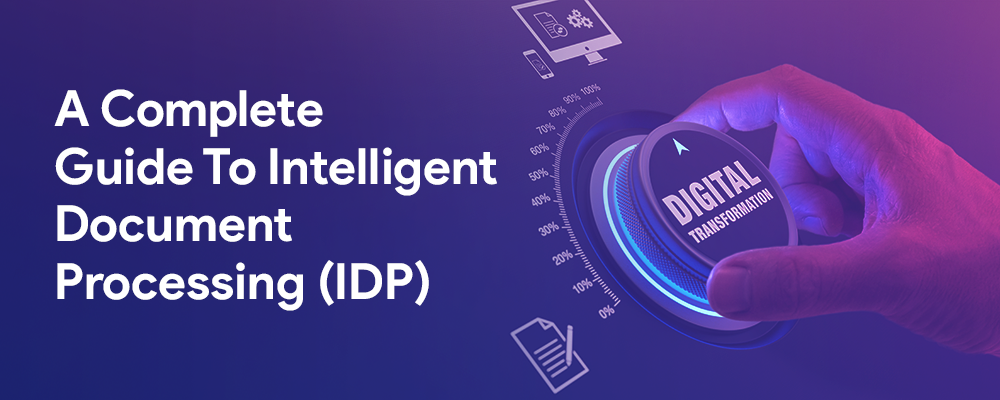“Your Data is Gold Mine” is aptly said as more than ever. Businesses need an in-depth and critical understanding of unstructured information, and it needs to be effectively managed. Undeniably valuable sources of information and insights, the ever-growing volumes of unstructured data put forward the problems. However, handling such information is less than rewarding for the human workforce. Does, for the minimum human intervention, intelligent document automation is the need of the hour.
Here comes the role of Intelligent Document Processing. This software solution uses automated machine learning technologies to efficiently process all types of documents, extract critical and relevant information, and feed the output into various available business applications.
Companies without automation solutions have increased their consumption of people by much percent a year. However, with the technological advancement in our surroundings, Intelligent Document Processing was developed to extract information from the documents such as OCR and ICR.
It is a form of intelligent automation that leverages advanced technology to extract unstructured or semi-structured data from documents, emails, images, PDFs, and other files and convert them into structured and usable data. It has helped enterprises eliminate manual data processing tasks, which is a great boon for our software industry, reducing costs and eliminating errors.
- Powerful technologies behind Intelligent Document Processing
Certain technologies have made it possible to manage unstructured data into structural ones with the help of Intelligent Document Processing. Some of them are mentioned below:
- Machine learning
- Optical character recognition
- Computer vision
- Artificial intelligence
- Natural language processing
- Deep learning
- Mechanism of Intelligent Document Processing
With the help of different technologies, intelligent document processing is the next generation of automation. While using artificial intelligence technologies such as natural language processing, machine learning, computer vision, deep learning, etc., it categorizes, classifies, and extracts important and relevant information and validates the extracted data.
- Capabilities offered by Intelligent Document Processing
Intelligent document processing has certain capabilities, including identifying difficult content, reading barcodes, document auto-classification, extracting information, validation, and organization of data and reports.
- Identification of the difficult content – IDP helps in extracting the information from OCR, which cannot be extracted with the traditional one. Artificial intelligence-driven solutions also help in deciding the relevance of a character or a word based on the context.
- IDP solutions are capable of reading and processing the barcodes and QR codes as well
- Intelligent document processing helps in the auto-classification of multiple document types that are coming from various streams and sources in different forms.
- For your convenience, IDP models can be trained to extract the specific and relevant information in the document that one needs.
- The validation process is completed with ease for the processed data against the rules set to determine the system’s accuracy and to sign the document for human review.
- The organization of data and reports has become easier to classify with the help of IDP solutions from different documents and extracting the data from multiple sources. Hence assembling it in one place for further critical analysis.
- Coign of Vantage- Intelligent Document Processing
The biggest advantage of this technology is basically to eliminate the human repetitive tasks and manage the unstructured data into readable and organized forms. IDP has benefited us with faster document processing, improved the accuracy of extraction, improved productivity, and ensured paperless document processing. In addition, since no manual data entry is required, hence no more human errors, and hence it will be cost-efficient. Besides this, intelligent document processing solutions are convenient to integrate with the existing system by combining with other automation solutions.
Read also: 7 Vital Benefits of Using Natural Language Processing in Businesses

